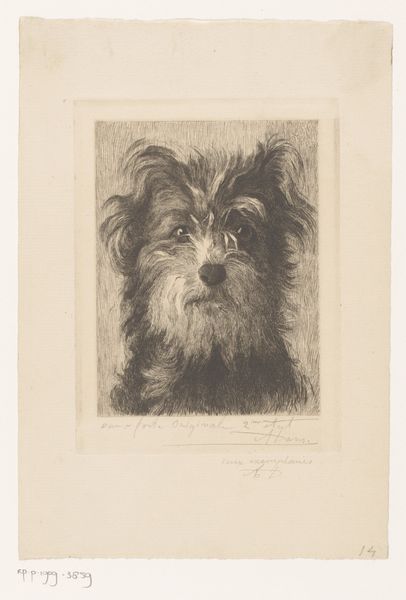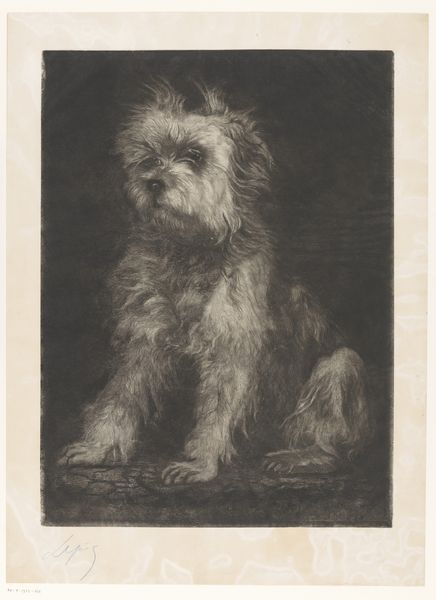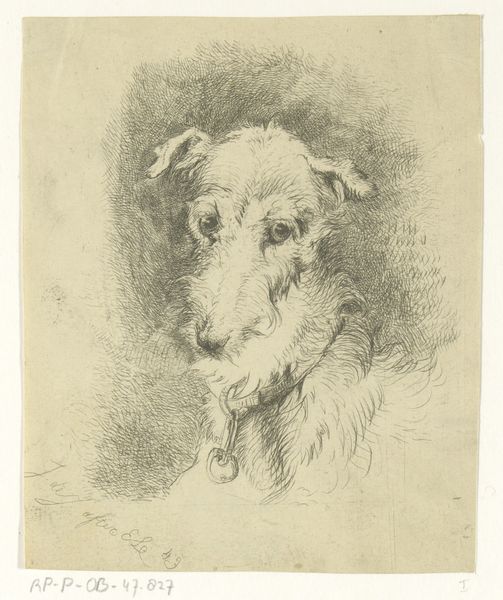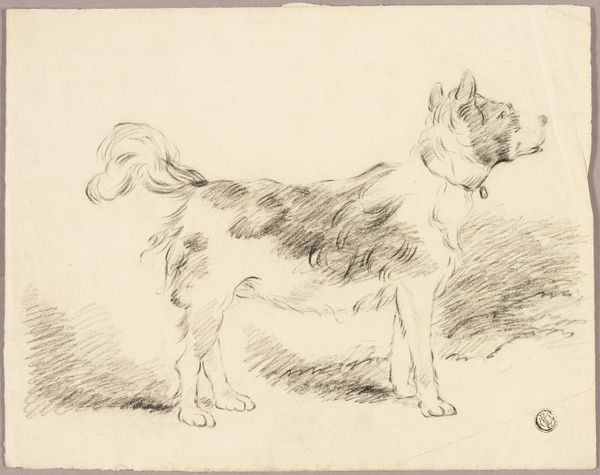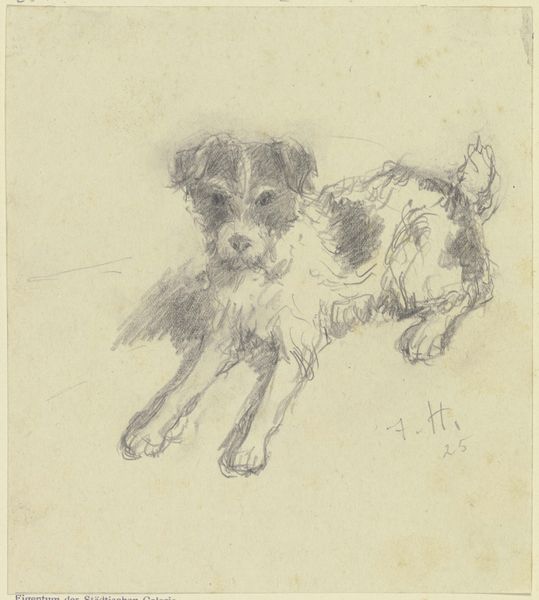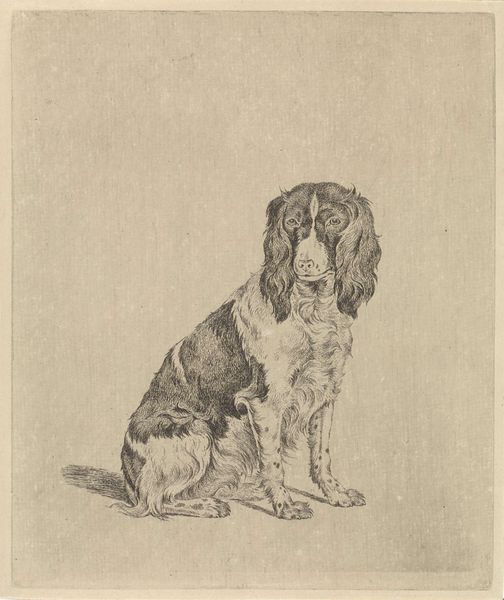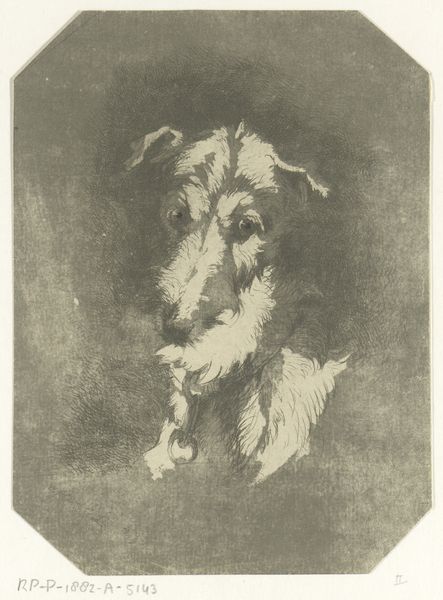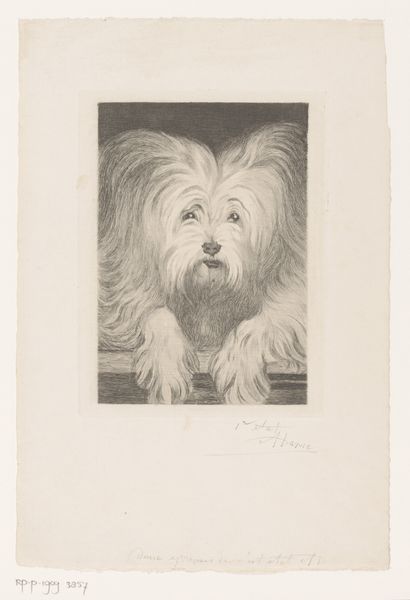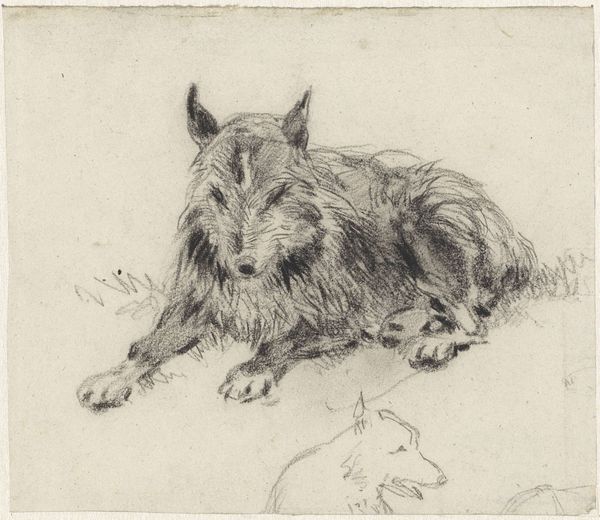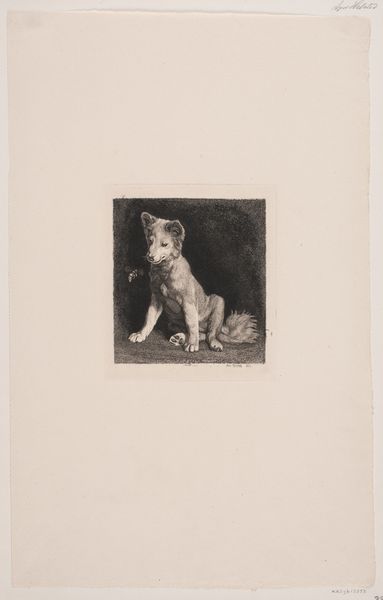
drawing, print, etching, dry-media, engraving
#
portrait
#
drawing
# print
#
etching
#
dog
#
dry-media
#
engraving
#
realism
Dimensions: height 233 mm, width 175 mm
Copyright: Rijks Museum: Open Domain
Curator: Well, this little fellow certainly has character. What's your first take? Editor: Scruffy! It's utterly charming, with that slightly cross-eyed expression and that nonchalant air. I love the soft, gray tones too. Curator: This is "Hollandse Smoushond" by Heinrich M. Krabbé, likely created between 1878 and 1888. It’s currently housed here at the Rijksmuseum. Editor: An etching, right? I’m interested in the production of it as it appears Krabbé uses the etching technique expertly. Notice the range of textures he gets through controlled biting of the plate. He's really explored what's possible within the graphic medium to depict fur. Curator: Indeed, you see evidence of dry-media and engraving combined in this print to really capture the Smoushond’s breed characteristics. Its history mirrors that of many working-class dog breeds, actually. Developed as ratters and stable dogs, often outside formal breeding programs. Prints like this can function almost as early records, before breed standardization. Editor: Absolutely. Looking at the labor, it speaks to a burgeoning awareness and visibility of these animals beyond utility. We see them elevated through Krabbé's skill to subjects worthy of artistic consideration and consumption, reflecting changes in social attitudes toward pets. The act of turning this working dog into art changes it from a tool into a commodity. Curator: The popularity of dog portraits reflects an interesting social shift within the context of expanding middle classes. Owning such prints became a symbol of domestic comfort. Editor: Precisely! And the medium – a relatively accessible print – makes it readily available for a wider audience, creating a kind of democratization of the portrait. The cultural value then lies in not just the subject, but its broad circulation. Curator: Well, thinking about Krabbé's skills, hopefully more than just pet portraits helped to elevate his reputation at the time. I will say, exploring this today brings such new angles to how we think about art and animals in this period. Editor: Absolutely! From a scruffy muse to a symbol of societal shifts. Not bad for a humble hound captured in print.
Comments
No comments
Be the first to comment and join the conversation on the ultimate creative platform.
